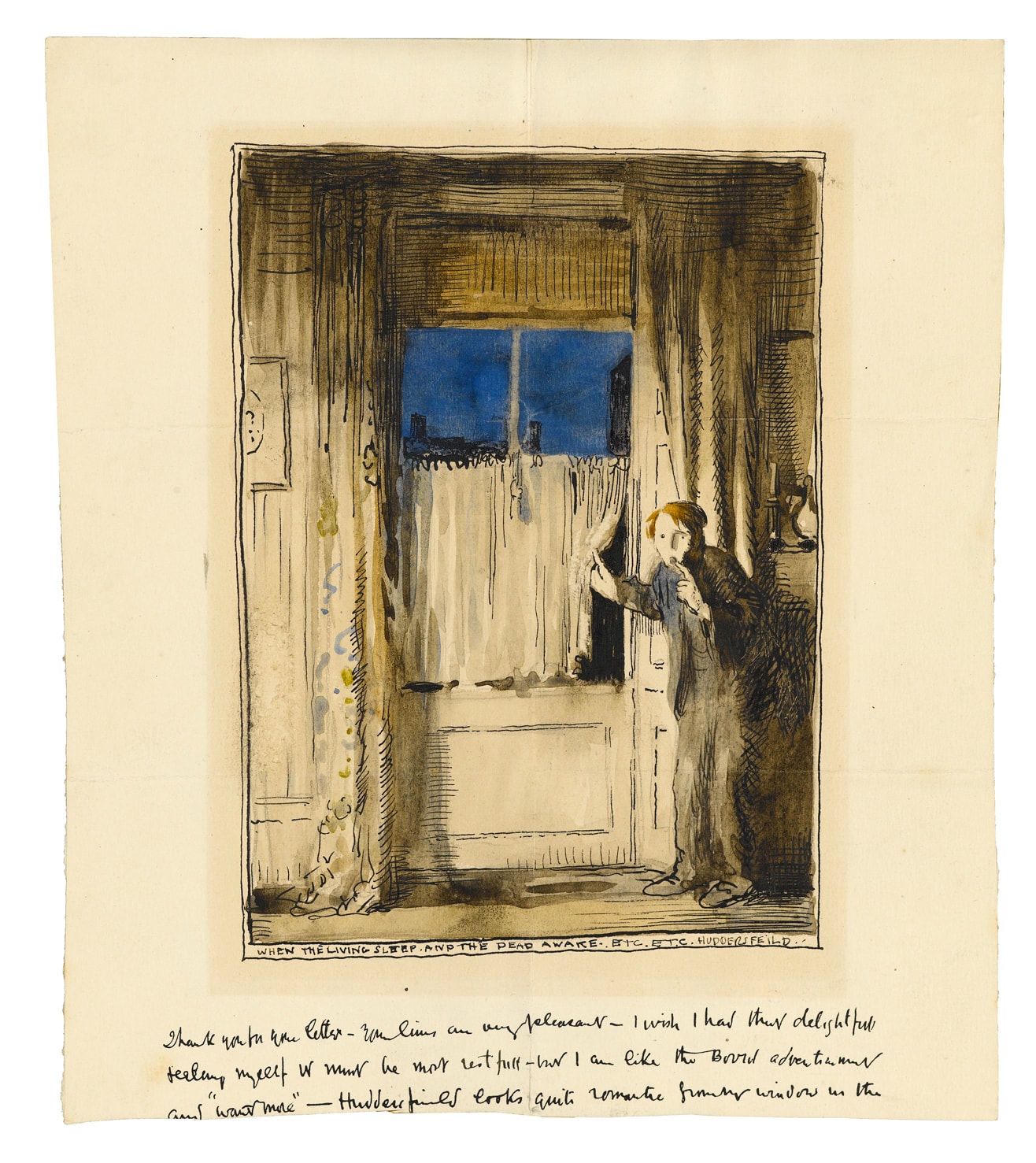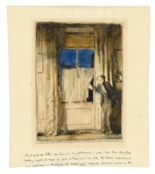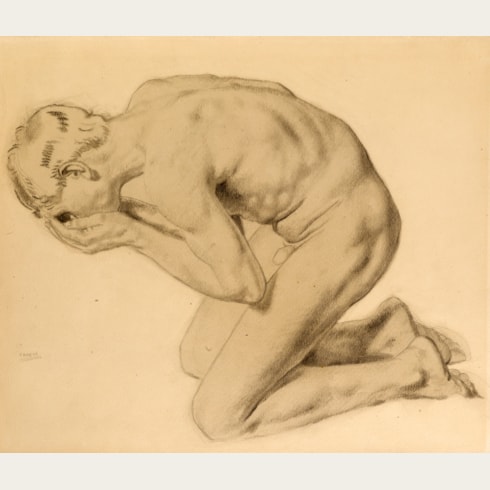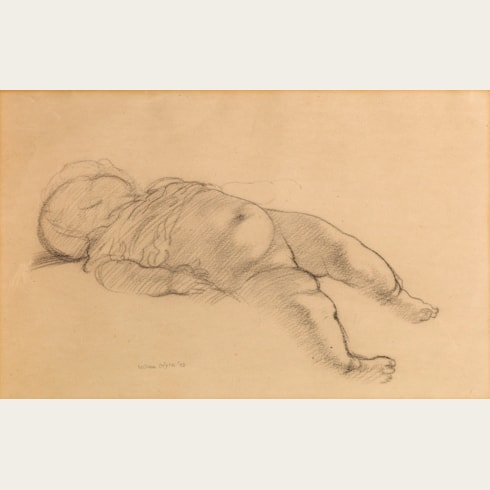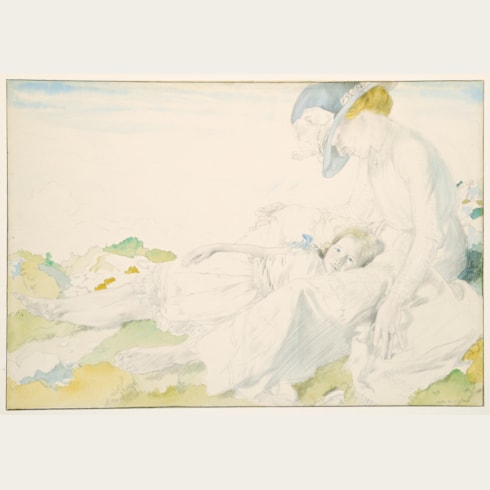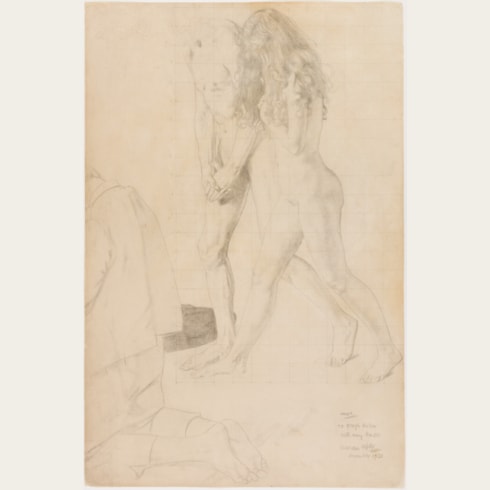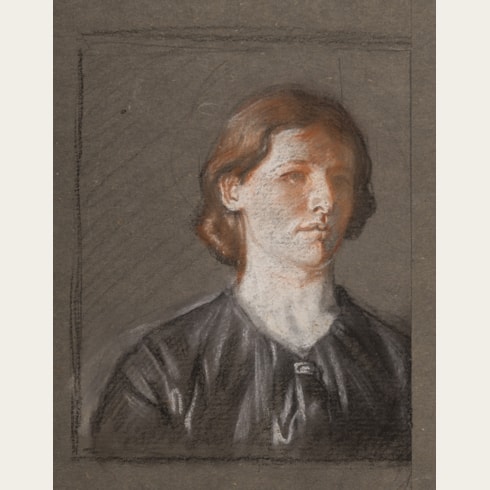William ORPEN
(Stillorgan 1878 - London 1931)
When the Living Sleep and the Dead Awake
Inscribed WHEN THE LIVING SLEEP AND THE DEAD AWAKE. ETC. ETC. HUDDERSFIELD at the lower edge of the image.
Further inscribed by the artist ‘Thank you for the letter – your lines are very pleasant – I wish I had that delightful / feeling myself it must be most restfull – but I am like the Bovril advertisement / and “want more” – Huddersfield looks quite romantic from my window in the -’ in the lower margin.
240 x 208 mm. (9 1/2 x 8 1/8 in.) [sheet]
As Bruce Arnold has written, with particular reference to the present sheet, ‘It would be hard to describe the letters which Orpen wrote to [Mrs. St. George] as ‘love letters’...In all, 365 letters, fragments of letters and drawings have survived. An overall judgement cannot be made, since in many cases the text has been cut away, leaving only a drawing surrounded by tantalising but unintelligible morsels of prose. The general tone is of warmth, friendship and intimacy, with only occasional overtones of romance. It was a loving friendship...There are curious, sad fragments. When he was in Huddersfield, painting a portrait of a Miss Lumb, he sent to Mrs St George a ‘Window Picture’, small, and in sepia and blue wash. In composition it is like the series involving Grace. But Orpen stands with his finger to his lips, holding back the curtain to show the sky. And he has written: ‘When the living sleep and the dead awake...’ He shares in this and other moments his more intimate feelings with mistress rather than wife.’
In 1912 Florence Evelyn St. George gave birth to a daughter, named Vivien, by the artist. The present sheet was one of several intimate letters and drawings by Orpen that Vivien inherited from her mother. (As she recalled in her memoirs, published many years later, ‘[Orpen] had written to my mother almost daily, as other men might keep a diary; fascinating letters, always illustrated and sometimes composed of nothing but drawings, like a strip cartoon.’) In 1974 Vivien gave over three hundred and fifty illustrated letters, drawings and sketches by Orpen, dating from between 1906 and 1929, to the National Gallery of Ireland in Dublin. The present sheet - one of the artist’s earliest letters to Mrs. St. George - and was one of only a handful of illustrated letters by Orpen that Vivien Graves retained in her possession.
William Orpen showed a talent for art at an early age, and in 1891 was admitted into the Metropolitan School of Art in Dublin. He soon came to the attention of his teachers and contemporaries as an immensely gifted draughtsman, and won several prizes for his drawings. In 1898, he transferred to the Slade School of Art in London, where his drawings continued to impress all who saw them. At the Slade, where his professors included Philip Wilson Steer and Henry Tonks, he met and befriended Augustus John. The two young artists soon came to dominate their class at the school, where they were quickly recognized as head and shoulders above their fellow students in terms of talent. Orpen joined the New English Art Club, and exhibited at the Royal Academy and the Royal Hibernian Academy. He was appointed an Official War Artist in 1917, and his powerful paintings and drawings of the trenches in France were exhibited in London the following year. Knighted in 1918, Orpen later published more of his scenes of the war in An Onlooker in France, 1917-1919, which appeared in 1921. The 1920’s found the artist at the height of his success, firmly established as one of the leading portrait painters in England, with a fashionable clientele and no shortage of commissions. Yet after his death at the age of only fifty-two his reputation lapsed into obscurity, and it has not been until relatively recently that he has regained something of the stature he once enjoyed.
Throughout his career, William Orpen was admired as one of the finest draughtsmen of his day. He drew for long hours every day, and left behind a large corpus of drawings and sketches. As the critic of The Art News commented of a publication of a portfolio of ten photogravure reproductions of his drawings in 1915, ‘These drawings are remarkable not only for their delicacy of handling, but for the loving care with which the pencil has revelled in beauty of form. Mr. William Orpen is thoroughly modern, yet he continues a tradition which has been handed down from the great draughtsmen of the past. His work does not suffer when placed by the side of the work of the Old Masters, a supreme but dangerous test.’
Another critic, writing at the same time in The Ladies’ Field, noted that ‘Mr. Orpen may be described as a tender draughtsman, tender in his care of and love for his materials. His hand is so marvellously delicate. His pencil hovers over the paper with the grace of a butterfly…He does not strive for the beauty of feature, as the French draughtsmen of the eighteenth century tried to capture those qualities. At times he is almost ugly and brutal; but he never loses the beauty of form.’
Provenance
Literature

